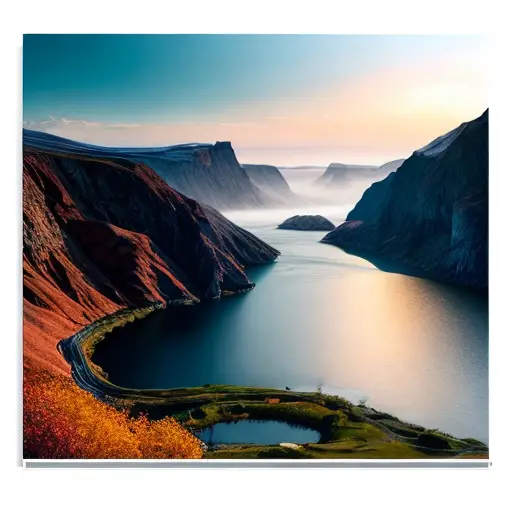Alright, fellow aspiring artists, let's dive into the colorful world of oil painting! Now, before you start channeling your inner Van Gogh, it's crucial to gather your essential oil painting supplies. First things first, you'll need a sturdy easel to hold your canvas, because let's face it, propping it up against the wall just won't cut it. Next up, grab a palette to mix your vibrant hues, unless you want your colors to resemble a chaotic rainbow explosion. Don't forget to stock up on brushes of various sizes, because a one-size-fits-all approach doesn't work in the art world, my friends. Lastly, invest in some high-quality oil paints, because let's be honest, you don't want your masterpiece to look like a sad, faded watercolor. So, gather these supplies, unleash your creativity, and get ready to paint the town...or canvas, rather!
An interesting fact about beginning oil painting is that the technique of underpainting, which involves creating a monochromatic base layer before adding color, has been used by artists for centuries. This technique not only helps establish the composition and values but also enhances the luminosity and depth of the final painting. Underpainting can be done using various colors, such as warm browns or cool grays, depending on the desired mood and overall color scheme of the artwork.
Alright, fellow artists, let's get our canvas and workspace ready for some oil painting magic! First things first, make sure your canvas is clean and free from any dust or debris. Nobody wants mysterious specks of dirt ruining their masterpiece, right? Now, it's time to prime your canvas with a layer of gesso. Think of it as the foundation for your artwork, ensuring that the paint adheres properly and doesn't seep through. While that dries, let's talk about your workspace. Clear away any unnecessary clutter and make sure you have good lighting to truly appreciate the colors you'll be working with. Oh, and don't forget to protect your clothes with a trusty apron or old shirt, unless you want to rock the 'abstract paint splatter' fashion trend. With a clean canvas and a well-prepared workspace, you're now ready to unleash your artistic prowess and create something truly extraordinary!

Alright, my fellow budding artists, let's dive into the wonderful world of oil painting techniques! Understanding these basics will help you create stunning works of art that will make even the most discerning art critics do a double-take. First up, we have the technique of blending. This involves smoothly transitioning colors on your canvas, creating a seamless and harmonious effect. To achieve this, use a soft brush and gently stroke the colors together, allowing them to mix and mingle. Remember, practice makes perfect, so don't be discouraged if your first attempts resemble a colorful mess!
Next, let's talk about the technique of layering. This involves building up multiple layers of paint to add depth and dimension to your artwork. Start with thin, transparent layers and gradually work your way up to thicker, more opaque ones. This technique allows you to create luminous and rich colors that truly pop off the canvas. Just be patient and let each layer dry before adding the next, unless you want your masterpiece to turn into a muddy mess.
Now, let's explore the technique of impasto. This technique involves applying thick, textured strokes of paint to create a three-dimensional effect. It adds a tactile quality to your artwork, making it visually interesting and captivating. To achieve this, use a palette knife or a stiff brush to apply the paint in bold, confident strokes. Experiment with different textures and thicknesses to create a truly unique and expressive piece.
Last but not least, we have the technique of glazing. This involves applying thin, translucent layers of paint over a dry base layer. Glazing allows you to create subtle shifts in color and add a luminous quality to your artwork. It's like adding a sheer veil of color to enhance the overall mood and atmosphere of your piece. Remember to use a medium like linseed oil or a glazing medium to thin down your paint and achieve that translucent effect.
So, my fellow artists, armed with these basic oil painting techniques, you're ready to embark on your creative journey. Remember, practice, experiment, and most importantly, have fun! Let your imagination run wild and watch as your artistic skills flourish with each stroke of the brush. Happy painting!
A fun fact about how to begin oil painting is that the first step is often referred to as 'priming the canvas.' This involves applying a layer of gesso, which is a white paint mixture, onto the canvas before starting the actual painting. The interesting part is that gesso was traditionally made using rabbit skin glue mixed with chalk or gypsum powder. So, in a way, the first step of oil painting used to involve a little bit of bunny magic!
Let's dive into the colorful world of oil painting and explore the art of color mixing and blending! Understanding these techniques will allow you to create a vibrant and harmonious palette that will bring your artwork to life. When it comes to color mixing, start with the primary colors - red, blue, and yellow - and experiment with different combinations to create secondary and tertiary colors. Remember, a little goes a long way, so start with small amounts of paint and gradually add more until you achieve the desired hue. Now, onto blending! Use a soft brush and gentle strokes to seamlessly transition between colors, creating smooth gradients and subtle variations. Don't be afraid to experiment with different brush sizes and pressures to achieve different effects. With a little practice and a lot of creativity, you'll soon be a master of color mixing and blending, ready to create breathtaking works of art!